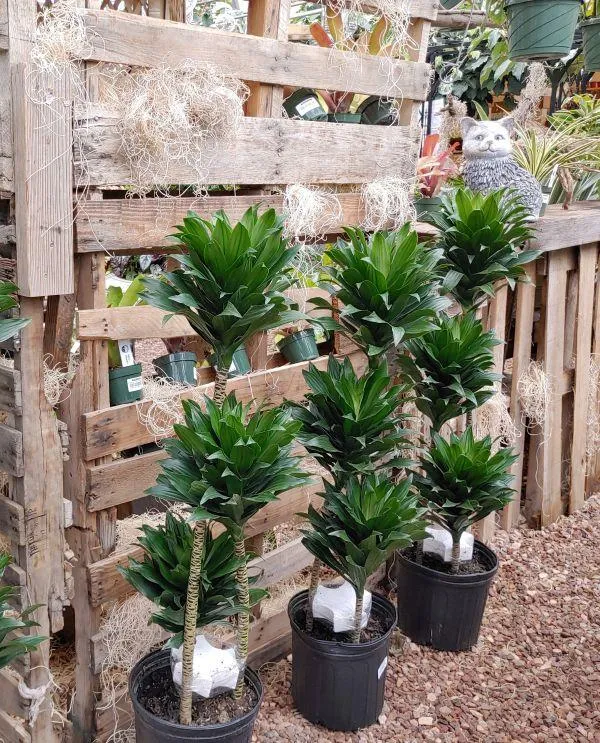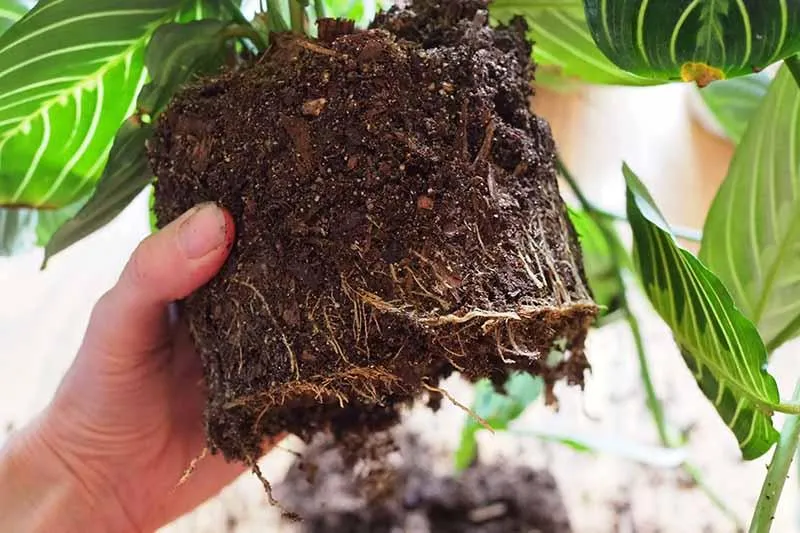Do Philodendron Brasil Like Being Root Bound?
One question many plant parents have when growing philodendron brasil is whether or not these tropical vines enjoy being “root bound,” or having their root systems restricted in a pot. From my experience caring for many household plants over the years, I’ve found that different species have different preferences when it comes to root space. Let’s take a closer look at how philodendron brasil respond to being root bound and what home gardeners can do to keep these beautiful vines healthy and happy.
Understanding Root Bound Conditions
To answer whether philodendron brasil like to be root bound, we first need to understand what root bound actually means. A plant is considered root bound when its root ball has filled the available space in its container to the point where new root growth is restricted. The soil is so densely packed with roots that there is little room left for water, air, or nutrients to circulate. At this stage, the roots may start circling around the inside of the pot rather than growing outward in a natural branching pattern.
Signs that a plant is root bound include roots protruding from drainage holes, sparse new growth above ground, and foliage that appears dried out or limp even when the soil is kept moist. While some plants can tolerate mild root bound conditions for a while, being severely root bound usually causes stress that hinders the plant’s overall health and vigor over time if not addressed.
Do Philodendron Brasil Mind Being Somewhat Root Bound?
In my experience growing various types of philodendron, I’ve discovered that philodendron brasil are relatively tolerant of root bound conditions compared to other species in the genus. These tropical vines have a natural tendency to grow extensively along the surface of the soil rather than plunging their roots deep into the container. As such, their root systems do not completely fill a pot as quickly as some other plants might.
From what I’ve observed, philodendron brasil can remain healthy and continue putting out new leaf growth even after their roots have begun to circle the inside of the pot. Minor root binding does not seem to faze them much. This tolerance allows brasil to be grown successfully in pots for longer periods before repotting is necessary compared to other philodendron types.

- At the same time, severe root bounding that leaves absolutely no room for new root formation or water/nutrient absorption will undermine a brasil’s health over the long run, just as with any other plant.
- Conditions should be monitored to check if roots are protruding from the drainage holes or if new growth suddenly slows, which could indicate it’s time for a larger container.
Factors Affecting a Plant’s Preference for Root Space
In general, a plant species’ natural habit in its native environment offers clues about how much root room it requires when grown indoors. Some tropical vines evolved to spread abundantly along trellises or trunks in the wild, so they remain content tucked into indoor pots for longer periods.
However, other influences also impact an individual plant’s tolerance for being root bound:
- Growth rate – Fast-growing plants outpace their root systems more quickly and need repotting sooner.
- Pot material – Roots may fill terracotta or plastic pots faster than unglazed clay which allows more air exchange.
- Soil composition – Organic, nutrient-rich potting mixes retain more moisture and encourage dense root growth.
- Light and water levels – Too much or too little of these inputs can slow or speed up a plant’s rate of growth above and below ground.
For philodendron brasil specifically, their combination of moderate growth rate and natural surface-spreading root habits indicate a greater capacity to stay content in slightly cramped quarters compared to other philodendron with deeper root systems like P. micans or P. selloum.
Signs It’s Time to Repot a Root Bound Brasil
While philodendron brasil can tolerate mild root binding, here are some signs it may be time to repot into a larger container to prevent stress:
- Roots emerging thickly from the drainage holes
- Leaves appear dried, brown tips or edges despite adequate watering
- New leaf or vine growth noticeably slows down
- The root ball appears solidly packed when removing from the pot
- Tugging gently on the plant pulls the whole root structure loose from the soil
When these symptoms start to develop, it’s wise to upgrade brasil to a container with at least 2-4 inches more diameter to accommodate continued root expansion. Carefully untangling any tightly bound roots during repotting also helps encourage outward growth.

Tips for Keeping Brasil Thriving in Pots
To maximize a brasil’s happiness while growing in containers, some tricks I’ve found helpful include:
- Selecting pots with good drainage and aeration like plastic or terracotta
- Using a well-draining soil mix like cactus/succulent or orchid bark blends
- Adding perlite or bark chunks for extra porosity
- Reporting into the new size every 1-2 years or when roots emerge thickly
- Trimming off encircling or girdling roots during repotting
- Providing consistent moisture and fertilizer to encourage new growth
- Placing in grow bags or taller pots as vines lengthen over time
In Conclusion
In summary, while philodendron brasil can withstand minor root bounding better than some other philodendron, severe confinement still risks stressing the plant. By monitoring for signs of overcrowding and reporting into progressively larger pots, home growers can keep their brasil thriving for years indoors. With the right conditions, these beauties seem quite content spreading their roots and leaves across the surfaces available to them pot by pot.
I hope this overview of brasil’s tolerance for root binding was helpful! Please let me know if you have any other questions about caring for these gorgeous tropical vines as houseplants.
Philodendron brasil prefer being root bound
| Trait | Details |
|---|---|
| Root growth | Philodendron brasil thrive when their roots are constricted in a pot, as this signals to the plant to put more energy into leaf growth rather than roots. |
| Watering | When root bound, philodendrons need less frequent watering as the soil dries out more slowly. Water only when the top inch of soil is dry. |
| Pot size | Choose a pot just 1-2 inches larger than the root ball. Repot into incrementally larger pots as the roots fill the container. |
| Fertilizer | Root bound plants do not need fertilizer as frequently. Use a dilute liquid houseplant fertilizer every 4-6 weeks during the growing season. |
| Propagation | Cuttings from root bound philodendron brasil are very easy to propagate in water or soil to grow new plants. |
FAQ
-
Do philodendron brasil like to be root bound?
Basically, philodendron brasil don’t always enjoy being crammed into a small pot without room to grow. Their roots can feel kinda squished in a container that’s too tight. At the exact same time, overcrowded roots won’t harm the plant. It just won’t grow to its complete potential size.
-
When should I repot a root bound philodendron brasil?
You should consider upgrading a philodendron brasil to a bigger pot if you notice its roots filling up the drainage holes. Its growth may slow down significantly if the root ball is very jam packed. Nevertheless, there’s no urgent necessity to repot as long as the plant seems otherwise healthy. Maybe hold off a season if you’re uncertain.

-
What size pot is best for a philodendron brasil?
Amazingly, philodendron brasil are versatile and will thrive in a vast array of pot diameters – from perhaps 6 inches on up. But generally speaking, a 10 inch terra cotta container offers nice room to develop without becoming overly immense too speedily. Digging in the garden shed brought back memories of my grandmother’s plant collection in similar pots.
-
Can root bound philodendron brasil be divided?
Potentially yes, dividing a root bound philodendron brasil can be a way to control its size while gaining more plant variations. Appears the key is to carefully separate the bundle of roots without damaging them too severely. You may wind up with two or more smaller Brasils to grow on individually. Rereading botanical guides often arouses doubts though.
-
What are signs a philodendron brasil is root bound?
Strong indications a philodendron brasil has become root restricted include stunted growth of its leaves and stems despite favorable conditions elsewhere. Additionally, you may see roots squeezing out the drainage holes or notice the root ball is solid when lifting the pot. Does this help elucidateWarning signs? Let me know if you have any other questions!
-
Should I repot every year?
Generally there’s no hard and fast rule about annually reporting philodendron brasil. It depends more on observing the plant and soil conditions. The roots may fill the pot after two years rather than one, especially if using a sizable container. On the other hand, putting off repotting for too long when evident root binding occurs could hinder the plant’s overall health. Inspect philodendron brasil regularly instead of always repotting on a set schedule. How does that perspective sound?
-
When is the best time to repot?
For many tropical foliage plants such as philodendron brasil, the spring or early summer often provides the most suitable period for repotting. That gives the freshly settled roots plenty of nice warm growing months ahead to reestablish before winter. Of course, the timing depends more on indoor conditions if mantaining as a houseplant. Either way, it’s preferable to repot when new growth has started rather than during dormancy. What do you think, is that a fair assessment?

